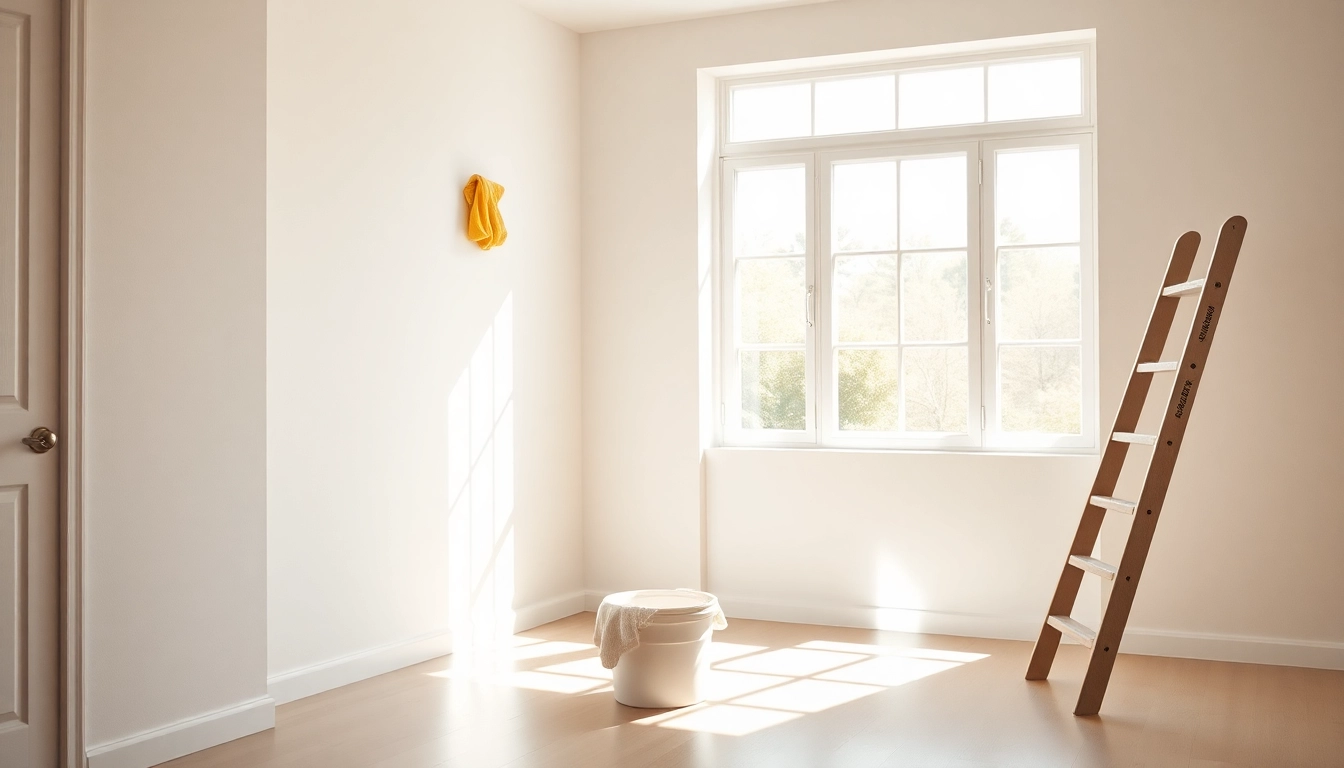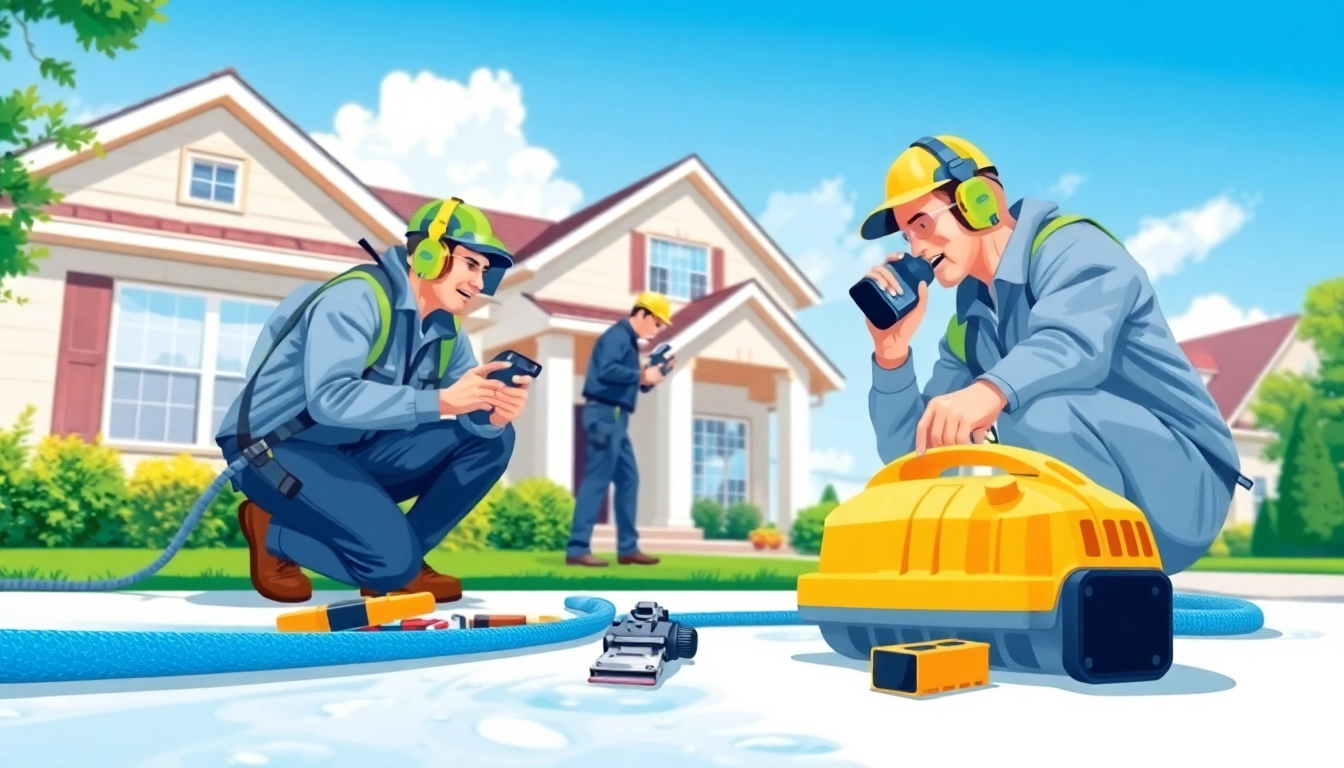Understanding Wall Cleaning Techniques
What is Wall Cleaning?
Wall cleaning is an essential maintenance task that involves removing dirt, stains, and grime from wall surfaces. Whether you’re dealing with residential or commercial spaces, keeping your walls clean not only enhances the aesthetic appeal but also prolongs the life of your wall coverings and paints. This process can range from simple spot cleaning with a damp cloth to using specialized tools and solutions for extensive deep cleaning. Regular wall cleaning is crucial to eliminate allergens and promote a healthy indoor environment.
Common Cleaning Solutions for Walls
Choosing the right cleaning solution depends on the type of wall surface and the nature of the stains present. Common options include:
- Soap and Water: For general dust and light stains, a solution of warm water and mild dish soap is often sufficient.
- Vinegar and Water: A mix of vinegar and water works well for greasy stains and odors on walls.
- Baking Soda Paste: This is effective for tougher stains. Mix baking soda with a little water to create a paste and apply it to the stain.
- Commercial Cleaners: For specific stains or heavy-duty cleaning, there are various commercial products available designed explicitly for wall cleaning.
For a thorough guide, consider checking out specialized resources on wall cleaning.
Benefits of Regular Wall Maintenance
Maintaining clean walls presents multiple advantages:
- Improved Aesthetics: Clean walls greatly enhance the overall appearance of a space, making it more inviting.
- Health Benefits: Regular cleaning reduces allergens, bacteria, and dust, contributing to better indoor air quality.
- Longevity: Proper maintenance can extend the life of paint and wall coverings, ultimately saving money on repairs and replacements.
- Increased Property Value: Well-maintained properties are generally more appealing to potential buyers or renters.
Essential Tools for Effective Wall Cleaning
Choosing the Right Cleaning Equipment
Having the appropriate tools can make wall cleaning a much more manageable task. Here are some essential tools that you should consider:
- Microfiber Cloths: These are ideal for dusting and light cleaning without scratching the surface.
- Sponges: Non-abrasive sponges are suitable for scrubbing stubborn stains.
- Soft-bristle Broom: This can be used to dust high walls or ceilings before wet cleaning.
- Paint Roller: A roller can be useful for applying solutions over large wall areas, especially in commercial settings.
- Extension Poles: These can help reach higher areas without the need for ladders.
DIY vs. Professional Wall Cleaning Tools
While DIY cleaning can be effective, some situations may call for specialized professional tools. DIY tools are accessible and can be used for regular maintenance tasks. However, professional services often use advanced equipment such as:
- Pressure Washers: Effective for large exterior walls.
- Steam Cleaners: Ideal for deep cleaning without the use of harsh chemicals.
- Commercial-Grade Cleaners: These are formulated to tackle specific types of stains or materials.
Assessing the specific cleaning needs will help determine whether to opt for DIY tools or hire a professional service.
How to Use Wall Cleaning Tools Effectively
To maximize the effectiveness of your wall cleaning efforts, follow these steps:
- Prepare the Area: Remove furniture or cover it adequately to protect from splashes.
- Dust First: Use a microfiber cloth or broom to remove loose dust and dirt.
- Test Cleaners: Always test your cleaning solution on a small area first to ensure it does not damage the paint or surface.
- Use Gentle Pressure: When scrubbing, avoid using too much pressure, which can damage paint.
- Rinse Thoroughly: After cleaning, rinse the area with clean water to remove any residues from cleaning products.
Step-by-Step Guide to Cleaning Walls
Preparing Your Walls for Cleaning
Preparation is crucial for an effective wall cleaning process:
- Inspect the Walls: Look for stains, marks, and imperfections that need attention.
- Gather Your Materials: Assemble all cleaning tools and solutions before starting.
- Protect Surroundings: Move furniture and place drop cloths to protect the floors and furnishings.
Best Practices for Wall Cleaning Techniques
Here are some best practices to ensure your wall cleaning is efficient:
- Start from the Top: Always clean from the top down to avoid redistributing dirt onto already cleaned areas.
- Use the Right Motion: Clean in circular or back-and-forth motions to lift dirt effectively.
- Work in Sections: Focus on one section at a time to ensure thorough cleaning without overwhelming yourself.
Post-Cleaning Tips to Maintain Walls
Once your walls are clean, here are some tips to maintain their cleanliness:
- Regular Dusting: Schedule regular dusting to prevent buildup.
- Immediate Stain Treatment: Address stains as soon as they occur to prevent them from setting.
- Protective Measures: Use wall decor and furniture strategically to minimize potential damage.
Addressing Specific Wall Stains and Marks
How to Remove Grease and Food Stains
Grease and food stains are common, especially in kitchens. To effectively remove these types of stains:
- Use a Grease-Cutting Cleaner: Apply a commercial cleaner designed for grease or a mixture of vinegar and dish soap.
- Scrub Gently: Use a sponge or cloth to scrub the stained area, applying minimal pressure.
- Rinse Thoroughly: Ensure to remove any cleaning solution residues by wiping with a clean, damp cloth.
Dealing with Pen Marks and Crayon Residue
For pen marks or crayon stains, consider the following techniques:
- Use Rubbing Alcohol: Dab a cloth with rubbing alcohol and gently blot the stain until it lifts.
- Baking Soda Paste: For tougher stains, apply a paste of baking soda and water and scrub softly.
- Magic Eraser: For stubborn stains, a magic eraser can work wonders without damaging the wall.
Cleaning Water Damage on Walls Effectively
Water damage can lead to mold and mildew, so addressing it quickly is essential:
- Identify and Address the Leak: Before treatment, make sure to fix any water source issue.
- Remove Damaged Material: Peel away any flaking paint or wallpaper to expose the underlying damage.
- Use a Mold Remover: If mold is present, use a specialized mold remover to treat the area.
- Allow to Dry: Ensure the wall dries thoroughly to prevent further growth.
When to Call a Professional for Wall Cleaning
Signs You Need Professional Wall Cleaning Services
While many wall cleaning tasks can be DIY, certain situations warrant professional intervention:
- Extensive Staining: If stains are persistent and resistant to home cleaning methods, professionals have the tools and expertise needed.
- Mold Growth: If mold is prevalent, it is best to leave the situation to professionals trained in safely removing mold.
- High Ceilings: For work in hard-to-reach areas, professionals have the necessary equipment for safe access.
Cost Considerations for Professional Wall Cleaning
The cost of hiring professionals can vary based on several factors:
- Square Footage: Larger areas typically cost more to clean.
- Type of Cleaning: Intensive cleaning (like mold remediation) will be costlier than standard cleaning services.
- Location: Prices might vary by region; urban areas often have higher service rates.
Generally, expect to pay between $0.50 and $0.60 per square foot.
Choosing the Right Wall Cleaning Service Provider
Selecting a reliable cleaning service is crucial. Here are some tips:
- Check Reviews: Look for online reviews and testimonials to gauge customer satisfaction.
- Inquire About Experience: Ensure the providers have experience, especially with specific stain removal techniques.
- Request Quotes: Get multiple quotes to compare pricing and service details.


